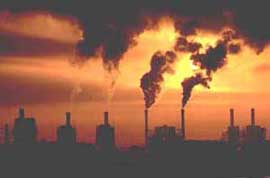
EPA Preparing to Battle Climate Change on Multiple Fronts
2/24/2009

The U.S. Environmental Protection Agency (EPA), led by new administrator Lisa Jackson, is taking its first steps toward tackling global climate change. Jackson has announced her intent to review several Bush-era policies that limited the agency's ability to curb greenhouse gas emissions through regulation.
With those documents presumably still in the agency's hands, and with the full support of President Obama's White House, EPA appears poised to take action. Carol Browner, Obama's lead advisor on climate change issues, told the National Governors Association Feb. 22 that EPA "will make an endangerment finding," according to The Wall Street Journal. "The next step is a notice of proposed rule making," Browner added.
Under the Clean Air Act, if EPA determines that vehicle emissions pose a risk to public health or welfare, a so-called endangerment finding, it triggers a legal obligation to regulate the pollutant.
The endangerment finding, along with a proposal to regulate tailpipe emissions, was sent to the White House Office of Management and Budget (OMB) for review in December 2007. OMB officials refused to open the e-mail attachments sent by EPA, effectively shuttering the agency's work.
An endangerment finding for greenhouse gas emissions would likely prompt the regulation of stationary sources as well. Similar to tailpipe regulation, the Clean Air Act directs EPA to regulate stationary sources, such as power plants and oil refineries, if emissions threaten health or welfare.
Jackson is already setting the stage for stationary source regulation. Jackson announced Feb. 17 that she would review a memo written by her predecessor, Stephen Johnson, maintaining that greenhouse gas emissions should be ignored when considering regulation of a stationary source.
Jackson is reconsidering Johnson's Dec. 18, 2008, memo in response to a request from the Sierra Club. According to a press statement, "EPA will vigorously review the Johnson memo to ensure that it is consistent with the Obama Administration's climate change strategy and interpretation of the Clean Air Act." In the meantime, "[P]ermitting authorities should not assume that the memorandum is the final word on the appropriate interpretation of Clean Air Act requirements," Jackson wrote to the Sierra Club.
The U.S. Supreme Court has already interpreted the Clean Air Act as giving EPA the authority to regulate greenhouse gas emissions. In April 2007, the Court ruled in Massachusetts v. EPA that the agency should determine whether greenhouse gases pose a threat to public health and welfare and, if so, regulate them. However, the Bush administration successfully stalled for the remainder of its term both the endangerment finding and regulation.
In addition to the endangerment finding and corollary federal regulatory proposals, Obama has instructed EPA to reevaluate a 2007 decision that prevented several states from moving forward with plans to curb greenhouse gas emissions from vehicles. Under pressure from the White House, Johnson refused to grant the states a waiver to regulate vehicle emissions.
According to a press statement, "EPA believes that there are significant issues regarding the agency's denial of the waiver. The denial was a substantial departure from EPA's longstanding interpretation of the Clean Air Act's waiver provisions."
In 2005, California petitioned EPA to allow the state to regulate vehicle emissions. Under the Clean Air Act, only EPA can regulate emissions, but the agency may grant a waiver to California if the state wishes to adopt more stringent regulations. If EPA grants California a waiver, other states may choose between the national regulations and California's regulations. Seventeen other states representing almost half the U.S. auto market are expected to adopt California's standards.
Jackson is also moving forward with two proposed rules that had languished under Johnson. EPA has sent OMB two draft proposed rules: one that would mandate an increase in the proportion of biofuels in the national gasoline supply and another that would create a registry for greenhouse gas emissions.
Under Executive Order 12866, OMB's Office of Information and Regulatory Affairs (OIRA) reviews and edits drafts of proposed and final regulations before they are shared with the public. The two EPA rules are among the first that Obama's OIRA will review.
The proposals are not released to the public until OIRA has completed its review.
Both rules have missed deadlines set by Congress. The renewable fuels standard – which requires a quadrupling of the renewable fuels supply, including a substantial amount of cellulosic ethanol or other advanced biofuels – was mandated under the 2007 energy bill. Congress set a deadline of Dec. 19, 2008, for EPA to finish the rule, but the agency has yet to even propose it.
The FY 2008 omnibus appropriations bill required EPA to propose the greenhouse gas registry rule by Sept. 26, 2008, a deadline it missed, and finalize the rule by June 26, 2009, a deadline it is in danger of missing.
According to EPA, the greenhouse gas registry rule "would establish monitoring, reporting, and recordkeeping requirements on facilities that produce, import, or emit greenhouse gases above a specific threshold in order to provide comprehensive and accurate data to support a range of future climate policy options."


